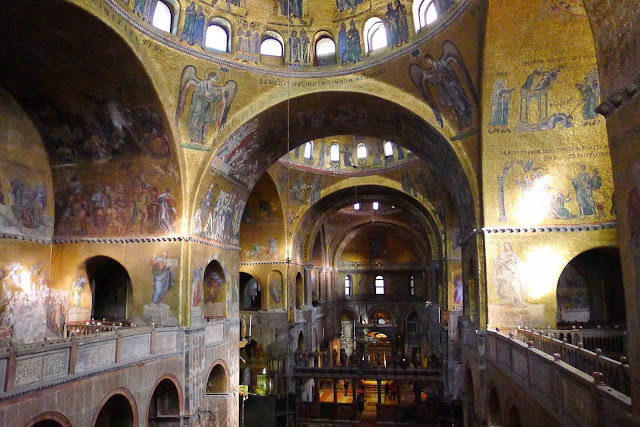If Rome has the grandeur of St. Peter's Basilica, London has the magnificence of St. Paul's Cathedral. Located in the ancient square mile known as the City of London (which is the ancient, historic city located inside the current city of Greater London), the Cathedral stands tall as a proud icon of the English people. And nowhere was this more apparent than during World War II, when images of the Cathedral standing resilient amidst a city devastated by Nazi bombing became effective propaganda symbols of English resiliency.
* Built after the
Great Fire of 1666, the Cathedral was the masterpiece of
Sir Christopher Wren, one of the most esteemed English architects in history. Having overseen the
reconstruction of at least 52 churches after the fire, Wren was also popular within the scientific-intellectual community with his contributions to science being highly praised by contemporaries such as
Isaac Newton and Blaise Pascal.
* The
Great Fire of London was a four day disaster which utterly devastated the City of London;
destroying 13,200 homes and 87 churches. Being superstitious folk, the English thought that this tragedy was
caused by the devil, it being 1666 and all. It is said though that the fire had a positive effect on the City. By burning down a lot of the dirty, unsanitized homes, rats and fleas, the
Great Plague of 1665 (in itself a great tragedy wherein 80,000 people died) was seemingly eradicated. Yep, those were HORRIBLE two years for the Londoners back then!
* Upon entering the Cathedral, one is bound to see some
similarities to St. Peter's Basilica in Rome with how MASSIVE and airy it is. Like with most tourist spots in London (Buckingham, Westminster, Tower of London),
photography is forbidden; but since the place is too big to properly monitor, I was able to steal a bunch of shots of some areas.
* From the entrance looking towards the altar (left) and from the altar looking back towards the entrance (right). Check out the
mosaic-encrusted ceiling, made with cubes of glass set at different angles to get that sparkling effect.
* A shot of the
High Altar, designed by Wren himself and made from Italian marble. While the
Cathedral looks Roman Catholic, this is actually the
mother church of the Church of England's Diocese of London and the seat of the
Bishop of London. The English have traditionally and historically been great defenders of Roman Catholicism; think
Richard the Lionheart during the Crusades. The inevitable split came when the
Pope refused to grant
Henry VIII's request for a
divorce from his first wife,
Catherine of Aragon.
* Like Westminster, St. Paul's is filled with
monuments and memorials to great Englishmen, most of whom have
distinguished themselves in battle, such as:
Captains James Mosse and
Edward Riou (upper left),
Major General Charles Gordon (upper right),
Lord Leighton (lower left), and a monument commemorating the loss of the
HMS Captain (lower right).
* One of the most
glorious-looking monuments is that of
Arthur Wellesley, more fondly referred to by the English as the
Duke of Wellington. His claim to fame?
Leading the British army to victory, as Field Marshall,
against Napoleon in the decisive
Battle of Waterloo. I remember admiring Napoleon's awe-inspiring tomb during my first visit to Paris and felt happy that his rival Wellington's monument was equally impressive, albeit smaller.
* St. Paul's has also hosted its share of historical events: from
Funerals (Winston Churchill, Duke of Wellington, Admiral Horatio Nelson) to
Weddings (Prince Charles to Lady Diana Spencer).
* The
scene outside the Cathedral flanked by London's trademark blue-grey buildings and littered with tourists scurrying around to find the
best photo angle.
* Directly
in front of the Cathedral, stands this monument dedicated to
Queen Anne, who reigned from 1702 to 1707. She is famous for having
formally united the kingdoms of England and Scotland to form the Kingdom of Great Britain; thus making her the first person to ever claim the title of
Monarch of Great Britain.
* Some other shots focusing on the different scenes around the Cathedral including: another shot of
Queen Anne's monument (upper left), close-up of the f
amous dome of St. Paul's which is one of the largest domes in the world weighing a mind-numbing 65,000 tonnes (upper right), a statue of
John Wesley, founder of the Methodist Church (lower right), and
Temple Bar Arch, also designed by Wren, signifying the entrance to
Paternoster Square (lower left).















Comments
Post a Comment